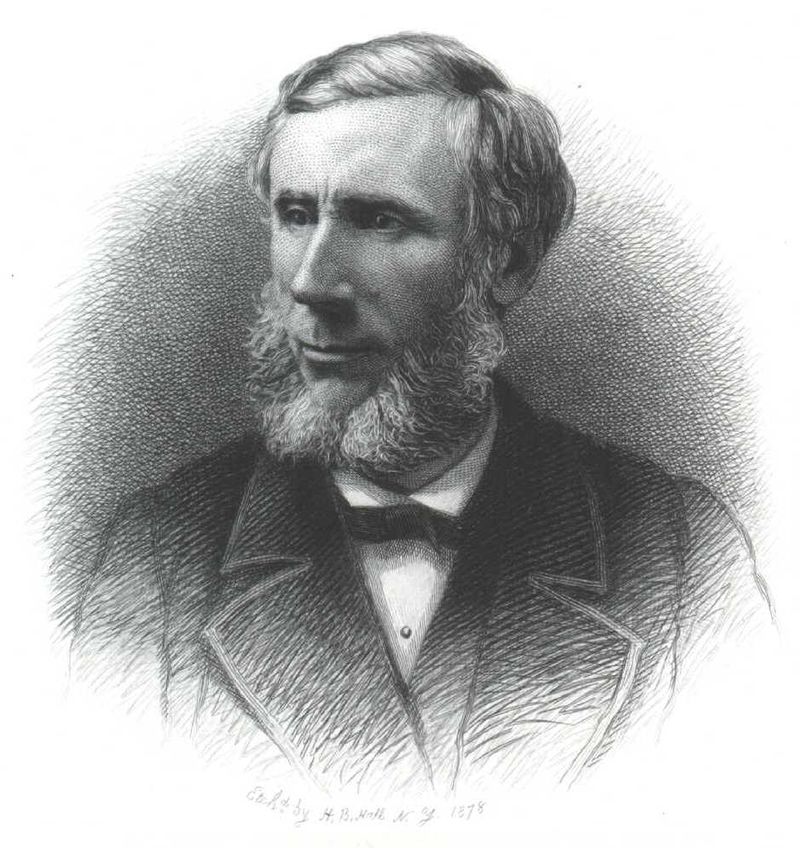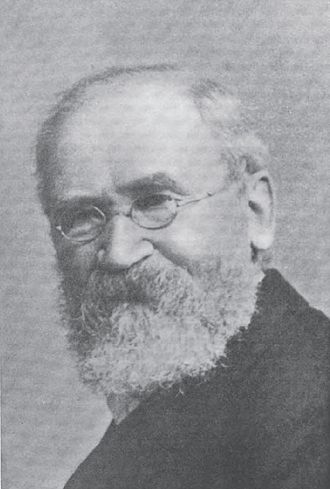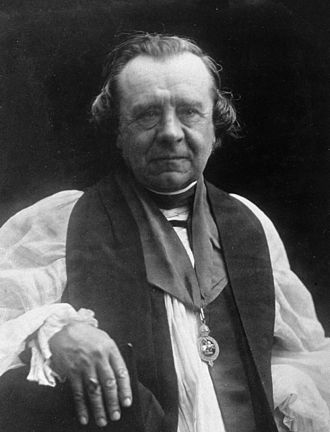
Evolution as a Trojan Horse
By Bernard Lightman
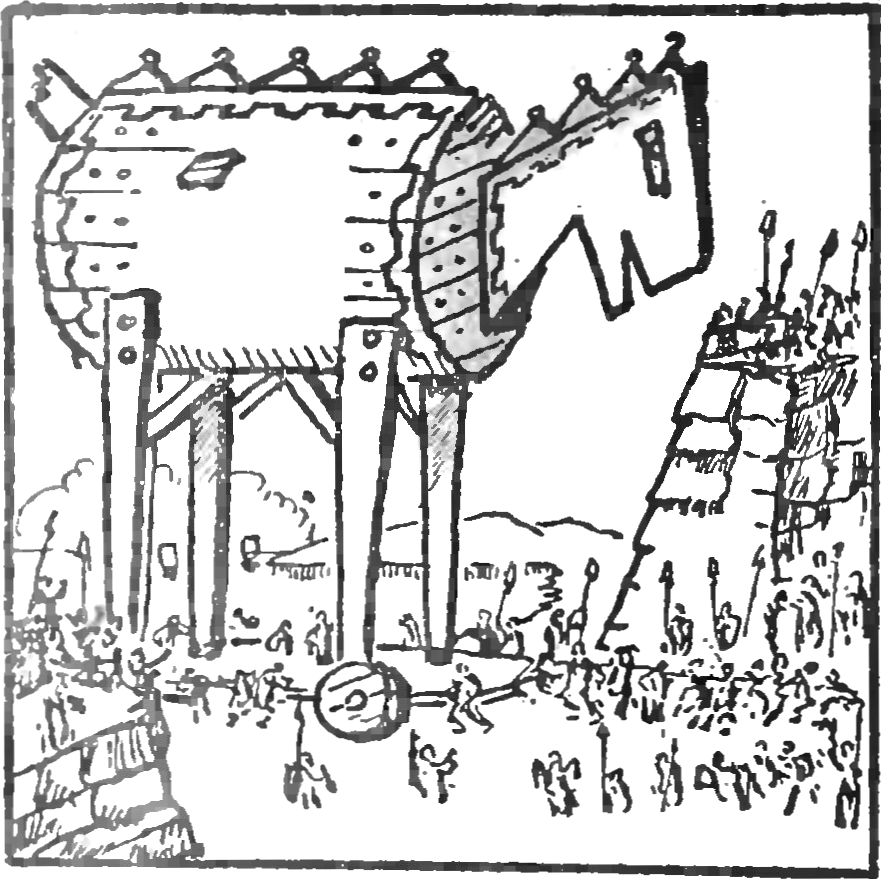
With the benefit of hindsight, we can now see that over the course of the past 150 years a remarkable reversal has taken place. Whereas once the investigation of nature had derived status from its intimate connections with the more elevated disciplines of ethics and theology, increasingly during the twentieth century these latter disciplines have humbly sought associations with science in order to bask in its reflected glory—whence bioethics and science-and-religion.
Professor Peter Harrison
In July 2019 I attended a fascinating colloquium at Cambridge titled “After Science and Religion.” It was organised by Paul Tyson and Peter Harrison of the Institute for Advanced Studies in the Humanities at the University of Queensland. The ambitious goal was to straighten out Christian theology’s relationship with modern science. The overwhelming majority of those present were theologians. Peter and I were the two token historians. It was an intense two days of papers that led to rich discussions. In my paper I tried to analyse the situation in Britain in the second half of the nineteenth century. My point of departure was based on one of Peter’s insights in his Territories of Science and Religion.
As the epigram above illustrates, Peter discusses how, by the end of the nineteenth century, science came to be seen as providing the model for seeking truth. Even ethicists and theologians had to bring their insights to the scientist for validation. Peter observes that “Darwin’s Bulldog,” the biologist Thomas Henry Huxley, established the exclusivity of science while making claims for the wide applicability of its methods. As Peter shows, Huxley asserted that the scientific method was the only method by which truth could be ascertained. Peter concludes, “the scientific method, thus understood, entails the view that underlying the various scientific disciplines there is a single unified and generic ‘science,’ and that this science offers us a unique and privileged access to truth.” The success of science in the second half of the nineteenth century—generally regarded by historians as the age of the worship of science—led to a reorganisation of all of the disciplines, including theology.
A historical understanding of the evolving relationship between science and religion is an essential component of any attempt to re-evaluate contemporary perspectives on the issue. Historians can open up new ways of thinking by showing the paths not taken that were live options at one point, before new assumptions constrained and narrowed thinking. Historians can also point to the intellectual dead ends that resulted when intellectuals accepted these new assumptions. One of those dead ends was the adoption of the conflict thesis as an influential way of viewing the present and historical relationship between science and religion. But there were others.
Scientific naturalists like Huxley attempted to constrain thinking about science and religion. They were aggressively pushing for a significant shift in the metaphysical presuppositions of western culture. It was a shift that went far beyond the acceptance or rejection of a specific scientific theory, such as evolution. To refer to the change in thinking taking place in the nineteenth century as ‘the Darwinian revolution’ is to miss the point. We must go beyond disputes over specific scientific theories like evolution and explore a deeper level of intellectual change. What actually happened had more to do with the new naturalistic metaphysics that began to ground modern science in general. This is why I think of evolution as a Trojan Horse. The Trojan Horse comes from a tale about how the Greeks were able to secretly enter the city of Troy to bring an end to the Trojan War. After laying siege to Troy for ten years, and failing to break through the fortifications, the Greeks constructed a huge wooden horse. When the Greeks pretended to sail away, the Trojans brought the horse into their city as a victory trophy. The Greek soldiers hidden inside opened the gates to Troy, allowing the rest of the army to overrun the city. Likewise, it was through evolutionary theory that a new metaphysical perspective was smuggled into Christianity and changed the dynamics of the relationship between science and religion.
The fundamental questions debated by British intellectuals in the second half of the nineteenth century were:
• How should science be defined?
• What are the limits of science, if any?
• To what extent does science provide the sole path to truth?
• What is the role of religion and theology once these questions are answered?
• And, finally, who has the authority to interpret the religious significance of modern scientific ideas?
The scientific naturalists, which included such figures as Huxley, the physicist John Tyndall, and the philosopher of evolution Herbert Spencer, were able to set the agenda for discussion of the relationship between science and religion long after they were gone, by persuading their contemporaries to accept their scientific, and in some cases even their religious, authority. This allowed them to frame the issues in such a way that it gave the upper hand to naturalistic metaphysics, although they claimed that science and religion belonged to separate spheres and therefore were not in conflict. The end result is that theologians in this period, and afterwards, were forced to choose between several dead ends. They could accept the authority of science, as defined by the scientific naturalists, in order to be seen as being in line with modernity. But this meant that they had to defer to scientists by bringing religious beliefs, such as the reality of miracles, to the bar of scientific judgment. They had to adapt Christian theology to whatever scientific theories were currently accepted by the scientific community. Theologians also had to put less stock in natural theology, since scientific naturalists wanted to remove theological concepts and language from the study of nature. If they rejected the authority of science, or its autonomy, they risked being marginalised as medieval relics of the past whose theology was not based on current knowledge. Whichever option they chose, theologians and religious thinkers in the second half of the nineteenth century were constrained, as both led to equally untenable positions in which the cultural status of theology and religion was seriously compromised.
Christian theologians in the second half of the nineteenth century can be divided roughly into three groups. In the past, the conflict thesis has highlighted those Christian theologians who rejected evolution while denying authority to the scientific naturalists in scientific as well as in religious issues. A second group acknowledged their authority on scientific matters, but not on religious issues. A third group believed that scientific naturalists possessed authority in discussions concerning both scientific and religious questions. In sum, the Victorian theological community was deeply divided on the issue of the nature of authority when scientific and religious matters were being discussed, which affected the status of theology. At stake was not only the authority of scientific naturalists in religious controversies, but also the authority of theologians in scientific controversies.
Examples of those individuals who accepted evolutionary theory and granted scientific authority to scientific naturalists while denying them religious authority include the philosopher and theologian Robert Flint, who held the divinity chair of Edinburgh University from 1876 to 1903 and another Scottish theologian, James Iverach, principal of the Free Church College in Aberdeen from 1905 to 1907. An important distinction can be made between Flint and Iverach and another group of Christian theologians, who accepted the science of scientific naturalists while going further in granting Huxley and his allies some measure of authority to interpret the religious significance of modern scientific thought. Principal of Mansfield College, a Congregational theological college in Oxford, Andrew Martin Fairbairn had grave reservations about Spencer, whose notion of an Unknowable God was “like a dead mask concealing a living face, a ghastly eye-socket without the eye.” But he believed that both Darwin and Tyndall provided valuable insight into the religious significance of modern scientific theory. Fairbairn’s position was analogous to the one put forward by Frederick Temple, a liberal Anglican who eventually became Archbishop of Canterbury in 1897. In his The Relation Between Religion and Science (1884), which aimed at reconciliation, Temple argued that the science in Darwin and Spencer’s evolutionary works could be accepted by committed Christians. However, like Fairbairn, he preferred Darwin to Spencer when it came to their attempts to draw philosophical and religious significance out of evolution.
But perhaps the most interesting group of theologians were those that not only deferred to the scientific authority of the scientific naturalists; they also looked to them for clues on how to interpret the larger metaphysical and theological meaning of modern science. This group included Charles Kingsley, George Matheson, Henry Drummond, and Aubrey Moore. Some even quoted from the works of scientific naturalists to provide their theology with more credibility. In effect, this gave scientific naturalists religious as well as scientific authority. The theologian, philosopher, and historian Aubrey Moore, for example, relied heavily on the scientific naturalists to frame his reconstruction of Christianity. Moore’s impeccable ecclesiastical credentials derive from the close relationship he had with Oxford Anglicanism. He graduated BA in 1871 and MA in 1874 from Oxford, and became a fellow of St John’s College, Oxford, in 1872. He served as tutor at St John’s until 1876, and at two other Oxford colleges, Magdalen and Keble, from 1881 until his death. At Oxford, Moore lectured on philosophy and the history of the Reformation. But his greatest contribution to the intellectual life of Oxford was his exploration of the impact of nineteenth century philosophical and scientific thought on traditional theology. A liberal high churchman, he was one of the contributors to Lux Mundi (1889), a manifesto of progressive Anglo-Catholicism. Here he argued that new philosophical and scientific ideas could enrich and confirm theological doctrine.
In “Darwinism and the Christian Faith,” one of the key chapters in Aubrey Moore’s Science and the Faith (1889), he reflects on the challenges to Christianity coming from Darwinism. Moore’s piece was originally written in response to the publication of Darwin’s Life and Letters in 1887, which, he declared, provided an opportunity to “face the question how far Darwinism affects Christian faith, and what are the points of traditional interpretation or apology which are modified by it.” Moore asserted that Christian theology had no reason to fear new scientific theories. This fear was “as unreasonable as the attempt to base the eternal truth of religion on what may eventually prove to be a transient phase of scientific belief.” In the case of evolution, however, he held that this was an established doctrine. The question, then, for Moore, was: given a Churchman who accepted the dogmatic positions of the English Church and who believed that the “doctrine of evolution” was the truest solution yet discovered by science, “what reconstruction of traditionally accepted views and arguments is necessary and possible?” What follows is Moore’s attempt to remove the difficulties generated by Darwin’s evolutionary theory by re-examining three Christian doctrines: 1) the theory of special creation; 2) the old argument from design; and 3) the old view of humanity’s place in nature. For Moore, then, the reconstruction of Christian beliefs is driven by new developments in science, in this case, evolution.
Moore argues that the doctrine of special creation, which depends on the notion of the immutability of species, can safely be rejected since it is not intrinsic to Christianity. He supports this point by offering a historical examination of when the doctrine of special creation first became integrated into Christian modes of thought. Moore shows that this doctrine was “unknown to Bacon and unauthorised by S. Thomas,” and therefore “is not likely to be essential either to science or religion.” The historical origins, Moore insists, actually lie in Milton’s Paradise Lost (1667), which came to be seen, erroneously, as a “sort of inspired gloss on the early chapters of Genesis.” Moore insisted that evolution was “infinitely more Christian” than the theory of ‘special creation,’ as it implied the immanence of God in nature, whereas special creation had more in common with deism. It is notable that Moore conceives of special creation as a religious “doctrine” that was in competition with the scientific doctrine of evolution. It is also significant that Moore quotes Huxley to support his notion that in destroying the dogma of special creation, evolution presented no real difficulties for theism. Huxley’s expert opinion is considered by Moore to be decisive.
Moore then proceeds to investigate how the doctrine of natural selection is said to have destroyed the argument from design. He remarks “that is a much more serious matter.” Although Moore acknowledges that Darwin destroyed the old teleological doctrine based on Paley’s emphasis on design, he also “unconsciously introduced a new teleology.” Again, Moore quotes Huxley for support. Besides, Moore points out, Kant had destroyed the old design argument long ago—metaphysicians already knew that. Finally, Moore reflects on how Darwin required a new view of man’s place in nature. Christian theologians had protested that Darwin’s theory degraded humanity. But, Moore asked, was that really true? Moore responds by turning to Darwin rather than Huxley. In tracing human descent Darwin had chronicled “his rise from the lowest origin to the highest order of being, of which science has any knowledge.” Moore again defers to a scientist to corroborate his views on the proper interpretation of evolutionary theory. Throughout the chapter he turns time and time again to Darwin for confirmation, drawing on the Life and Letters for evidence as to the late evolutionist’s more reverent views. In the end, Moore brings three Christian doctrines to the bar of science, rejects them, and reconstructs Christianity with the guidance of Darwin and Huxley.
British theologians from diverse Christian traditions grappled with the onslaught of metaphysical naturalism that was championed by influential scientific naturalists in the second half of the nineteenth century. Huxley and his allies had set a clever trap for Victorian theologians. They leveraged their scientific authority during the debates over the validity of evolution so as to force theologians to make choices that could only lead them into dead ends. Scientific naturalists like Huxley fought to establish the autonomy of science—they wanted the fate of important theories, evolution for example, to be determined on scientific grounds alone, without interference from theologians. But this position led to the notion that scientific knowledge was privileged and that all theories, concepts, and ideas, including religious ones, required the imprimatur, the blessing, of scientific authority. Some theologians chose to deny scientific authority to the scientific naturalists. Since Huxley and his friends claimed that they alone spoke for science, figures who rejected evolution on theological grounds risked the possibility that they would be considered anti-scientific and obsolete in their thinking. Indeed, those who took this position, men like Bishop Samuel Wilberforce, are often depicted as the great losers in the debate, both then and now. Their opinions seemed to lack legitimacy as they were not based on science. They have been marginalized.
For those theologians who chose to accept the scientific authority of the scientific naturalists, there was a further decision to make: whether or not to confer religious authority on them as well. Kingsley, Matheson, Drummond and Moore, men from diverse traditions within Christianity, all opted to grant both scientific and religious authority to Huxley and his friends. Scientific naturalists, they argued, did have insight into religious issues based on their scientific expertise. Their views on the religious significance of modern science could be used to support an updated vision of Christianity. But it also gave science a privileged status. This position was a dead end in the sense that the validity of religious belief was to be judged using scientific criteria. The result is the remarkable reversal to which Harrison draws our attention. Then there were the positions in between. Flint and Iverach grant scientific, but not religious, authority to the scientific naturalists. But the challenge for those who held to this position was maintaining parity between theology and science in an age when the status of the latter was growing significantly. Why was Huxley trustworthy as a scientist but not as a religious thinker? The other “in between” position, advanced by Fairbairn and Temple, was that some scientists could be religious authorities. But whereas Temple trusted Spencer when he ventured into religious territory, Fairbairn was suspicious of Spencer and preferred Darwin and Tyndall. However, if Fairbairn and Temple could not agree on which scientific naturalists merited a degree of religious authority, it raised questions about whether any scientific naturalists could be trusted and about the judgement of Christian theologians on these issues.
Today many of those engaged in trying to understand the relationship between science and religion – including historians, theologians, and scientists – are still enmeshed in the coils of the shift in metaphysical presuppositions grounding western culture. The remarkable reversal in the positions of science and theology, which flipped their cultural authority, remains a serious problem for contemporary theology. Although Huxley declared that religion still had value and a territory of its own, as did Stephen Jay Gould, it was the scientist who determined the size and boundaries of that territory. The origins of our contemporary situation can be traced back to the Victorian period, when the territories assigned to science and religion were deeply problematic, and ultimately disastrous for theology. If we attempt to re-think the way in which we conceive of science and religion, and their respective territories, we must recognize that there may even be a problem with the very notion of territories, whether they are seen to be overlapping or non-overlapping. The preoccupation with “magisteria,” or in Peter Harrison’s terms, “territories,” may preclude any effort to escape how the scientific naturalists framed the issues around a privileged naturalistic metaphysics, and it may indicate that Huxley and his allies still dictate the parameters of the debate. Apparently, the Trojan Horse strategy continues to be an effective, subtle weapon in the hands of those who lay siege to religion.
Suggestions for Further Reading
Harrison, Peter. The Territories of Science and Religion. Chicago and London: University of Chicago Press, 2015.
Lightman, Bernard. “The Theology of Victorian Scientific Naturalists.” In Science without God? Rethinking the History of Scientific Naturalism, ed. Peter Harrison and Jon H. Roberts. Oxford: Oxford University Press, 2019, 235-253.
Moore, James R. The Post-Darwinian Controversies: A Study of the Protestant Struggle to Come to Terms with Darwin in Great Britain and America 1870-1900. Cambridge: Cambridge University Press, 1979.
Turner, Frank Miller. Between Science and Religion: The Reaction to Scientific Naturalism in Late Victorian England. New Haven, CT: Yale University Press, 1974.
Turner, Frank Miller. Contesting Cultural Authority: Essays in Victorian Intellectual Life. Cambridge: Cambridge University Press, 1993.

Bernard Lightman is Distinguished Research Professor in the Humanities Department at York University, and President (2018-2019) of the History of Science Society. For more see his Research Profile.
